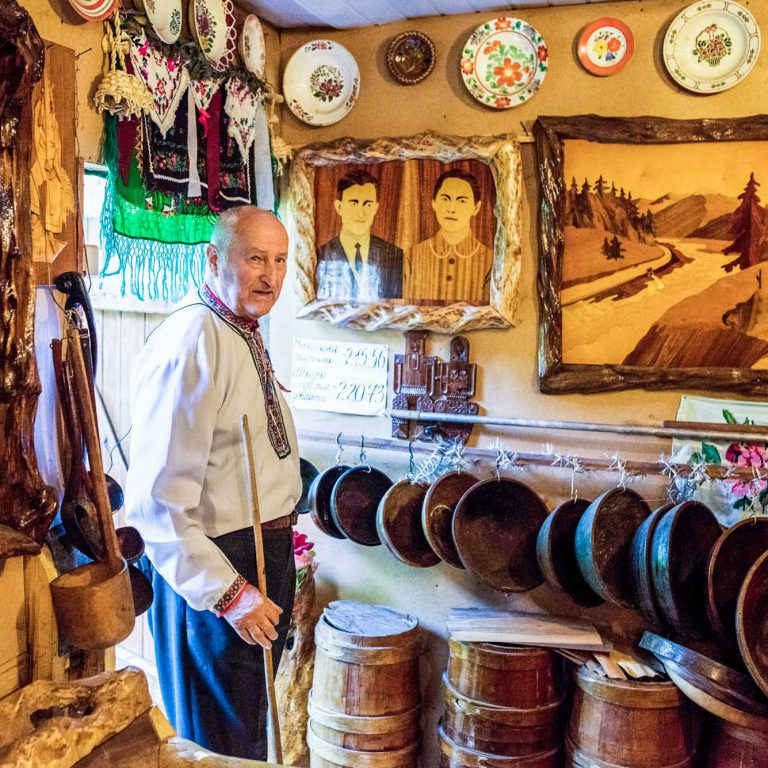Kalyny village in Tiachiv region could be easily considered a typical Trans-сarpathian settlement. People mostly do woodworking here and pick up blueberries for sale. But there is one place and one man in Kalyny that make this village unique and attract a rising number of tourists.
In 2005, a local resident – Yurii Kutsyn created an extraordinary ethnographic museum in Kalyny. Anyone who strives for exotics, can feel the atmosphere of tropics or distant Japan without crossing the border as well as listen to the museum owner’s stories about travels to faraway countries. A lemon tree grows in the museum’s garden, and in spring the ground under Japanese sakura is covered with pink petals.
One-man museum
A new type of tourism is gaining popularity in the world – more and more people are eager to have local experience: get acquainted with local residents, see how they live, where they work and how they spend their leisure time. In other words – learn about the country at first hand. That makes so called “one-man museums” pop up here and there. Such a format of the museum presupposes ordinary people to create thematic or art expositions (mostly in their homes) and give tours around.
For example, a Singaporean Koh Nguang How assembled a collection of over a million of South-Eastern cultural artefacts and placed them all in his own apartment.
Another type is a thematic museum, such as the one created by Charles Evans – a retired man from the USA. His wife passed away in 2011, so he decided to set a museum to honor her memory. The exposition consists of their mutual photos, belongings and music records, which the couple used to dance along to.
Museums like these inspire many people to travel hundreds of kilometers to hear the owners’ stories and to feel the unique vibes of the place. So it’s no surprise that Yurii Kutsyn’s ethnographic museum is popular among foreigners as well.
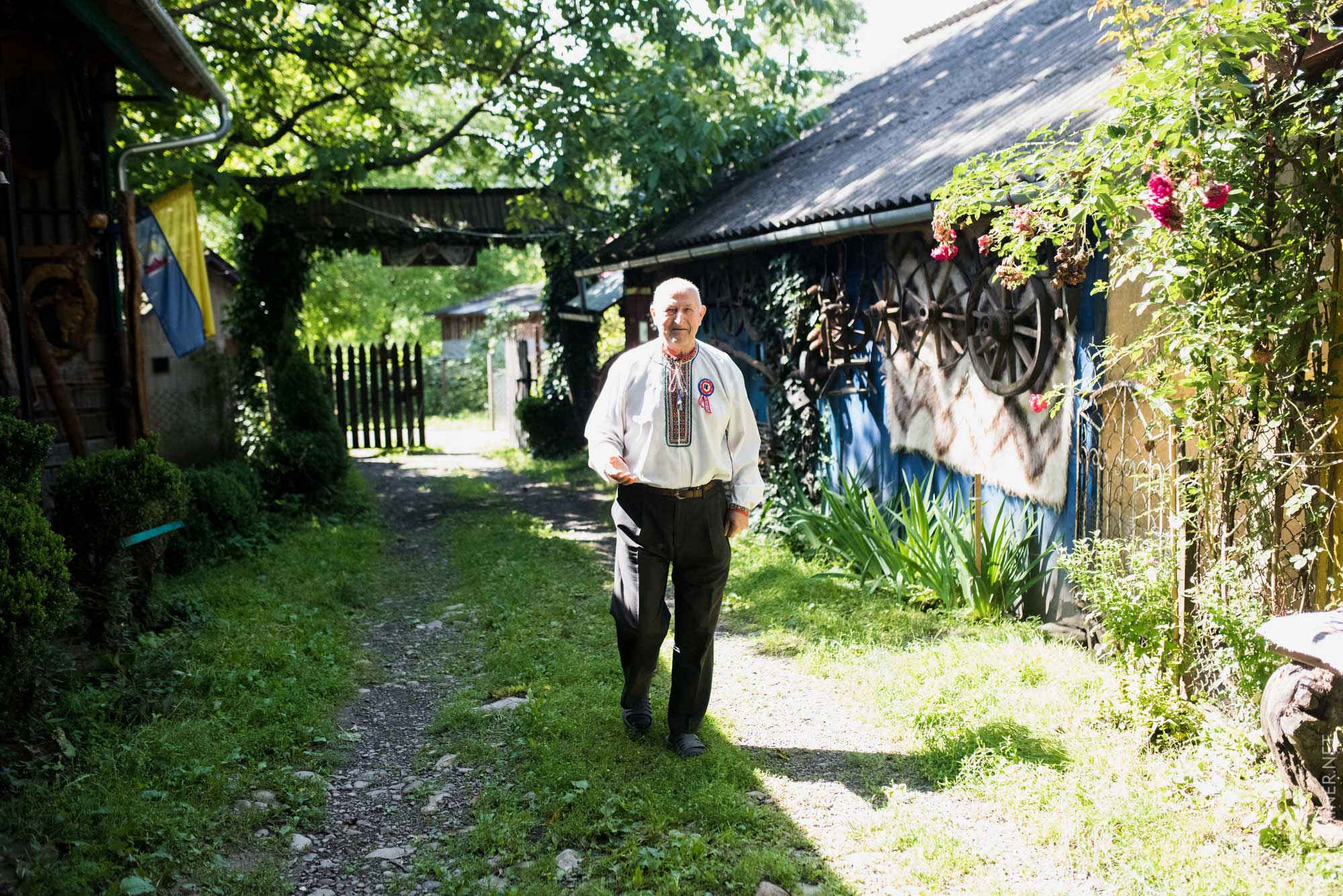
Yurii
Yurii Kutsyn tells about his life as if it were a joke or a funny story. If not for photos and souvenirs from distant countries, it would have been hard to believe that this ordinary looking elderly gentleman from a mountain village has travelled across 76 countries in 15 years and even was involved into USSR intelligence:
— Sometimes, I would leave Moscow when it was 25 degrees below zero and arrive in Deli at night when it was +42ºC. I would travel south to Madras state (the distance is the same as from here to Odessa) and the temperature there would be +56 ºC. I went to Kolkata and there was gunfire in the airport. Police hid us under concrete staircase and guarded us.
All stories of Yurii’s life are true and uncensored:
— I’ve been to three wedding ceremonies in India: the rich, the middle and the poor ones. One Indian girl hugged me so tight, I felt as if 1000 volts went through me!
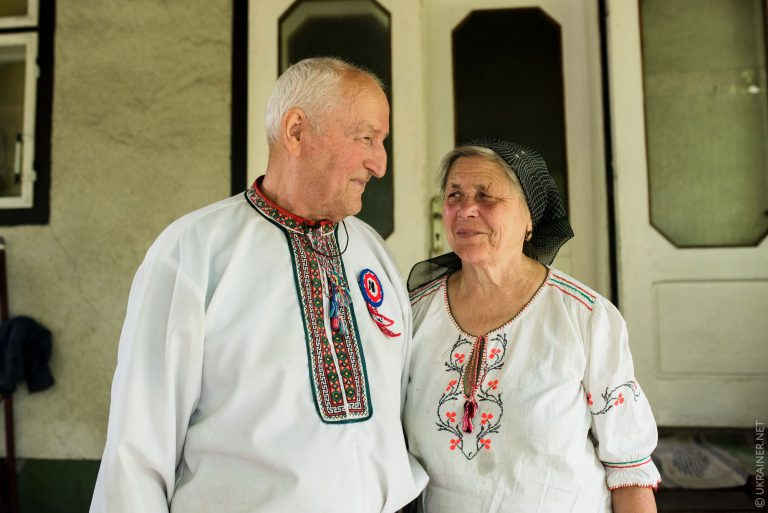
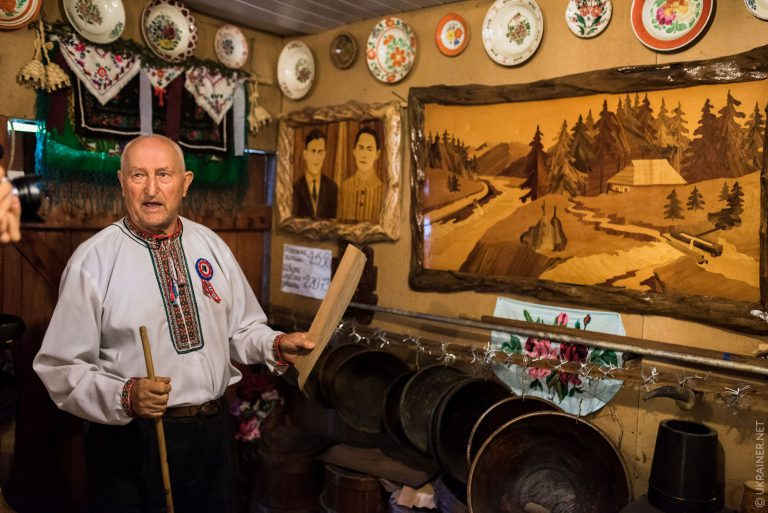
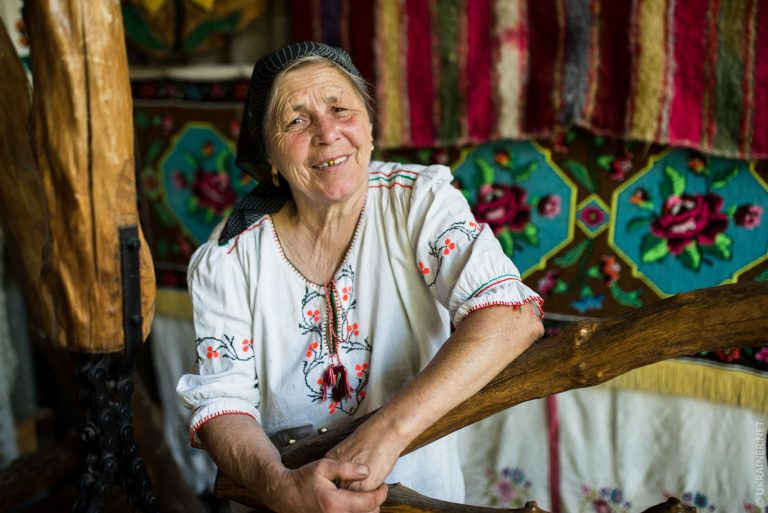
slideshow
Three years ago, the Kutsyns threw a hell of a party to celebrate 50th anniversary of their marriage. Yurii loves to tell how carefully he was choosing a wife. He wooed to girls from four neighborhood villages, but eventually followed his mother’s advice. Now, the spouses pick up herbs in highlands, which they use later to make Carpathian tea. The Kutsyns are also beekeepers. Their beehives can also be considered museum units:
— This is a unique beehive, which cannot be found anywhere else either in Ukraine or Europe. A monastery beehive is a home for two families, and this is an apiary for 100 families. There is no difference, actually, except for the form. Just don’t swing your hands too much, or they will sting you. If that happens, you’ll have to pay 10 UAH per a sting – to cover the cost of vaccine, syringe and help of a nurse.
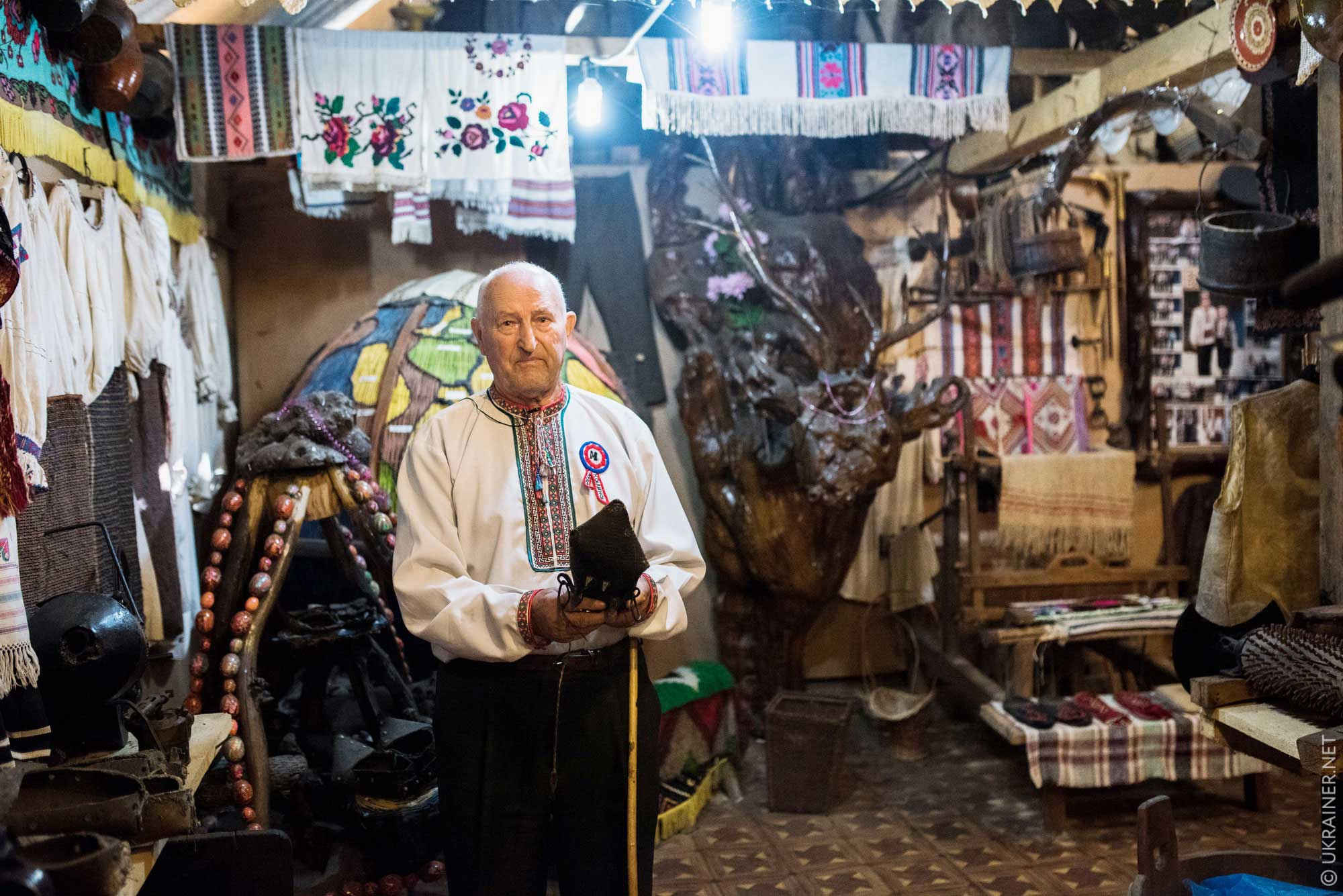
Yurii Kutsyn loves to be the first in everything. He was the first in the village to become an owner of LADA 7th. When the Ho Chi Minh airport was being built in Vietnam and the Bushehr NPP in Iran, he was there as a construction engineer. When the Maltese Embassy needed a communication manager, Yurii went there:
— These are the pictures of countries I travelled to. I’ve been everywhere, starting from Moscow. During Brezhnev’s regime, I was assisting in establishing communism, during Gorbachev’s – in eliminating it.
The practice of communicating with elderly people shows that those who were once involved into Soviet secrets hardly ever share the related stories. The power of propaganda and fear of the regime make it difficult to speak even now, after more than a quarter of a century. On the contrary, Yurii is quite open – he jokes a lot and seems like he tells all the truth:
— In the village, they call me Yurii Ivanovich. According to Ukrainian passport, I am Heorhii Yanushovich, and in Moscow I have two foreign passports. They say I am Caesar Morricone. Therefore, you can’t cavil at me. My landline phone is encrypted too.
Yurii used to bring souvenirs from his travels overseas, though he would get little money to spend on them – 58$ for 5 countries. He once managed to bring an icon and a diamond ring for his wife, and another time – a lite herbal drug:
— I chewed it, shared with friends. I gave it to a manager, he chewed it and went home. His wife returned from work and asked, “Are you drunk?” – “No, of course not!” – “Don’t you lie to me!” He later came to work and asked, “Yurii Ivanovych, what was that? I was so jolly and jumpy.” I said, “That was a drug.” That scared the heck out of him.
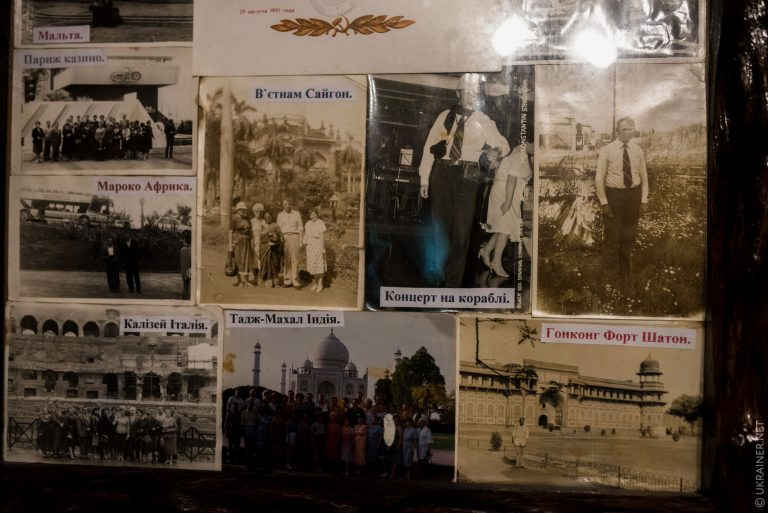
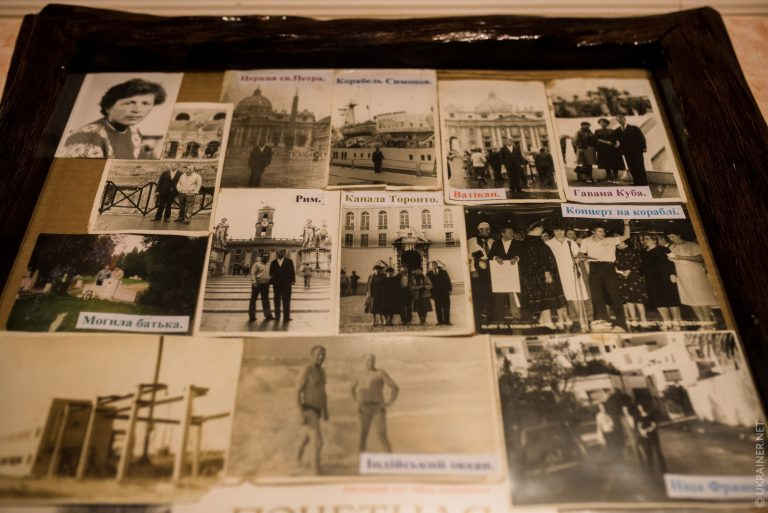
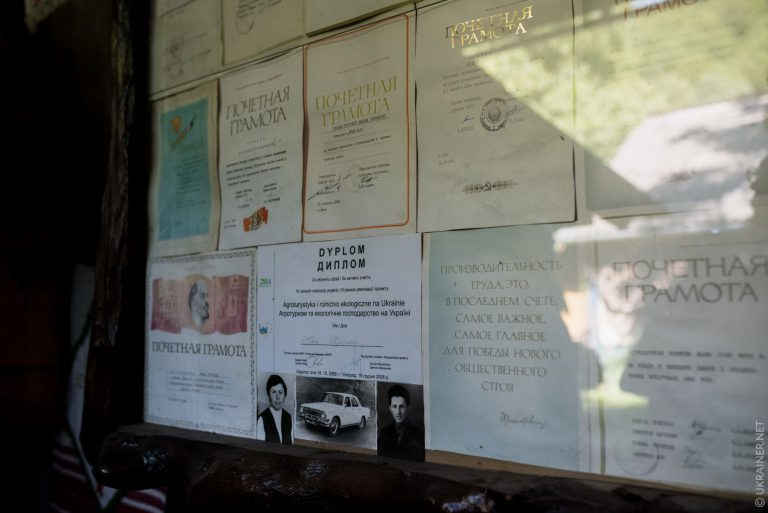
slideshow
Even now, ten years later, he’s excited to share another story which took place long ago and far away from Kalyny village:
— I was walking along the lake road when I spotted six Americans. I recognized them by berets and American flags. I was alone, without guards, though I wasn’t authorized to leave the embassy unattended. I saw them and realized I might get into trouble. There was a lake nearby with large green burdocks. I didn’t have any other option, so I jumped into that lake and found out there was silt. I picked up one burdock and covered my head, holding it with my mouth. Americans passed quietly and didn’t spot me, but a Vietnamese saw everything from the other side because his home was nearby. I tried to get out when Americans walked away, but I couldn’t make it – my legs got stuck in mud. The Vietnamese approached, pulled me out with a bamboo stick and took me to his house. I washed and dried myself, called the embassy and asked them to send a car to pick me up.
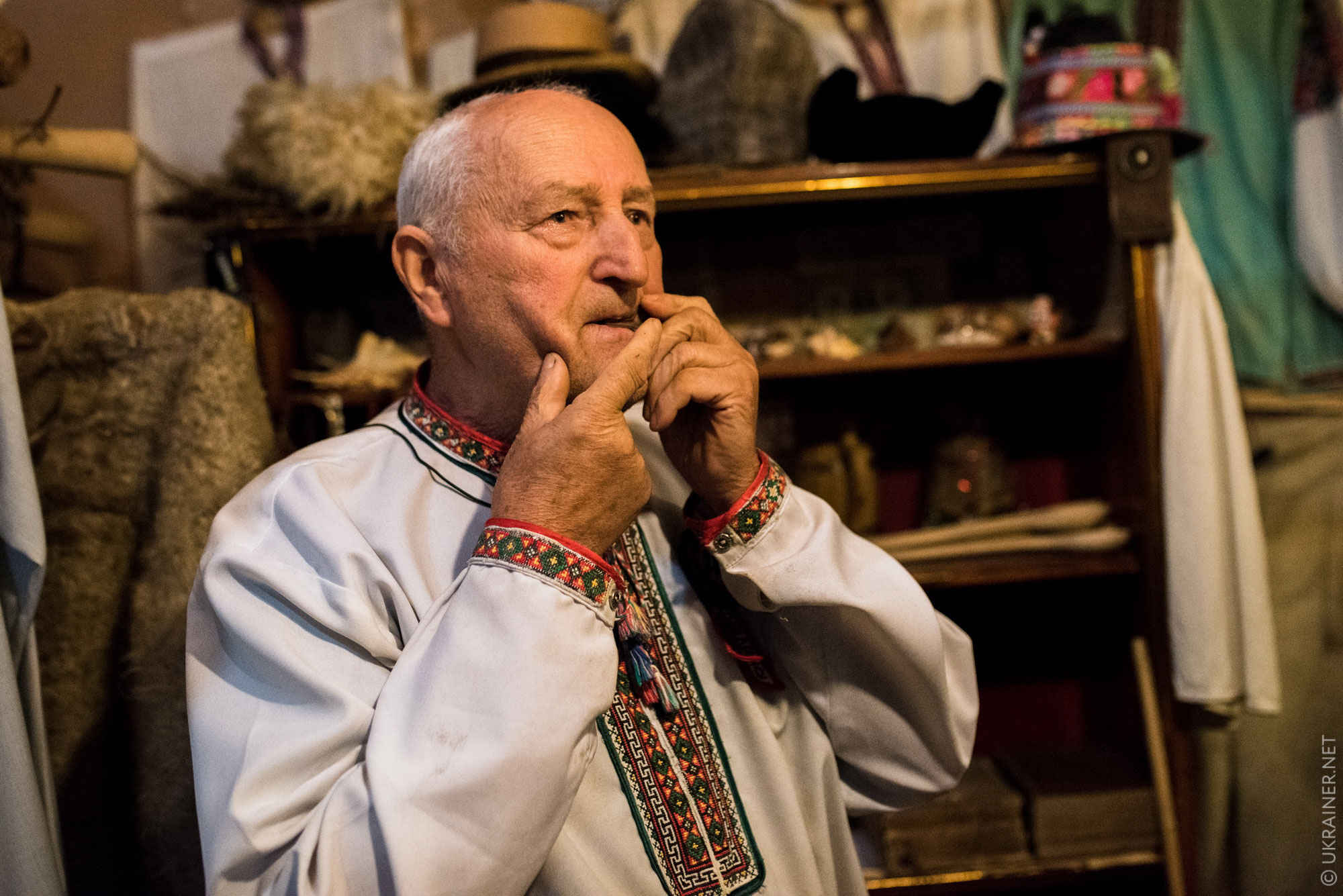
Adventurism and fearlessness are the first words that come to mind after hearing Yurii’s stories. Even now, though mostly in his mind, he’s ready to bring down mountains:
— I was afraid of nothing but God. I’ve been suffering from back pains for 20 years now. I have had 5 surgeries and my hip replaced. I used to be fearless: I stood up against one negro in Paris. He was stealing dollars from one Russian lady. I was standing a little behind and I saw this robber’s hand in her pocket. He made it only the second time. I saw this. I didn’t take the bucks, I only grabbed his hands and said in Russian, “Take your dollars, lady!”
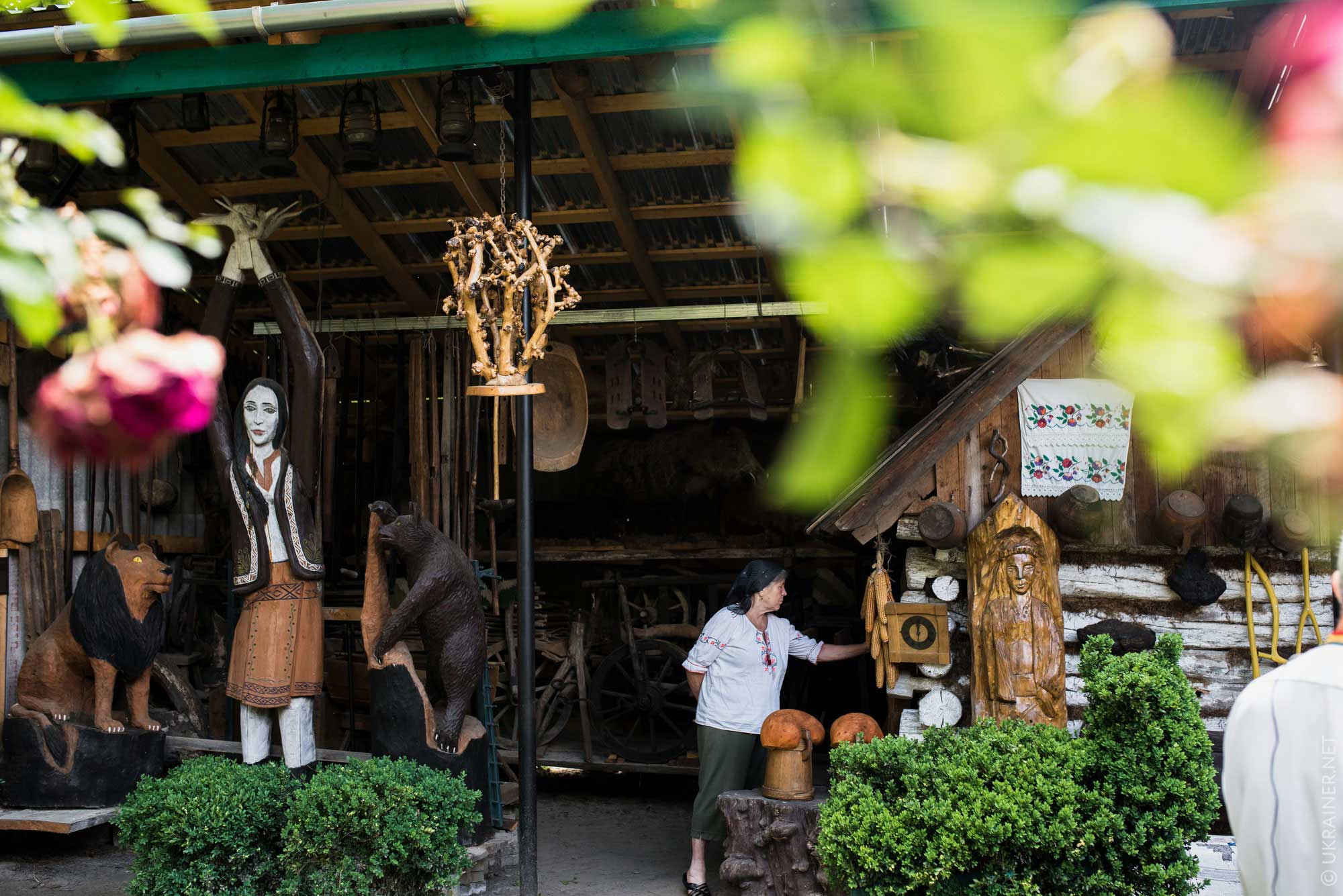
Museum in Kalyny
The story of Yurii is also an example of ideological flexibility. In spite of his integration into the Soviet system, you will not hear complaints about modern politics from him. After the collapse of the Soviet Union, he returned home and continued to do what he could do best – to build.
Yurii Kutsyn is not nostalgic about soviet symbols, though symbolic and mythological addictions are the hardest to get rid of in the cause of decommunisation:
— Here is a Ukrainian Coat of arms. On the other side, there used to be the Russian one – with a hammer and a sickle. A tourist once approached me and said, “These are not a hammer and a sickle, these are death and famine.” Later, when I was in bed, it appeared to me, “That guy was right.” When Lenin launched the Union, the revolution was raging – death and famine came knocking on every door. That man said the right thing. I now explain the true meaning of those symbols to visitors.
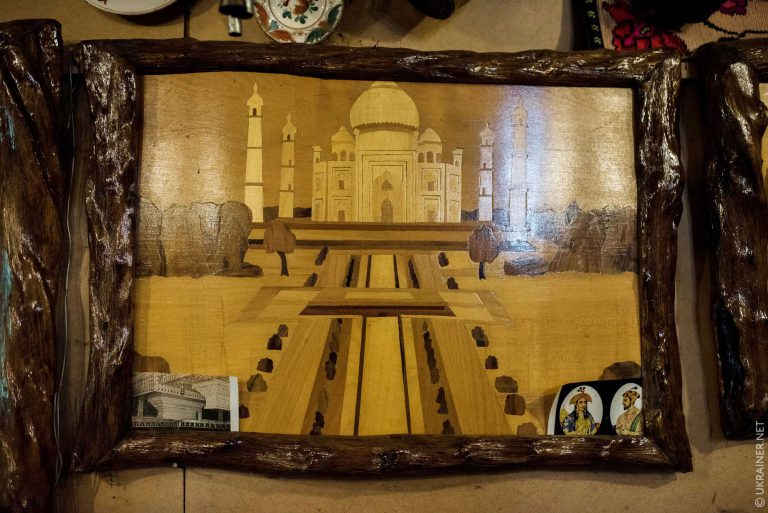
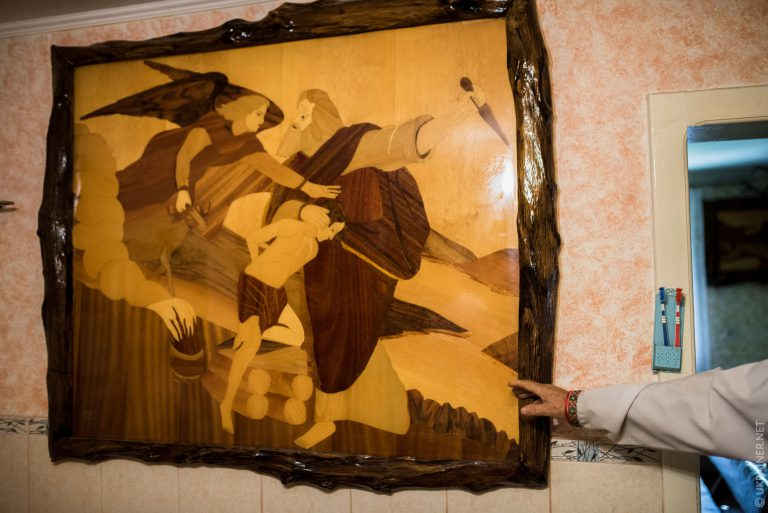
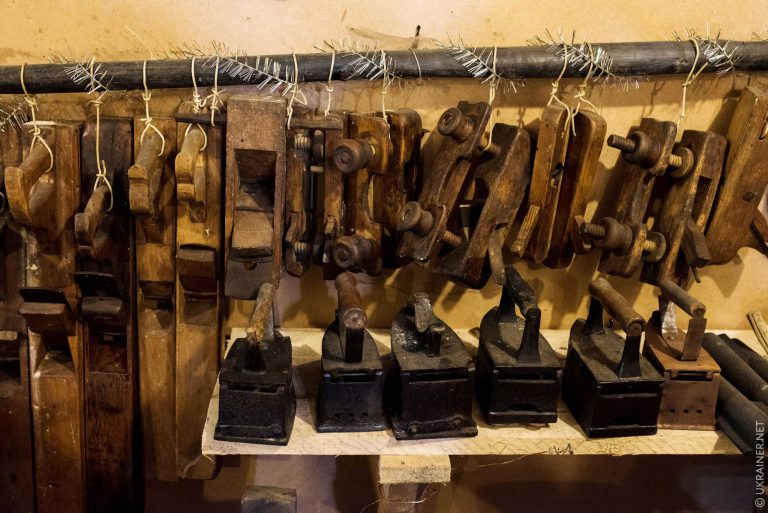
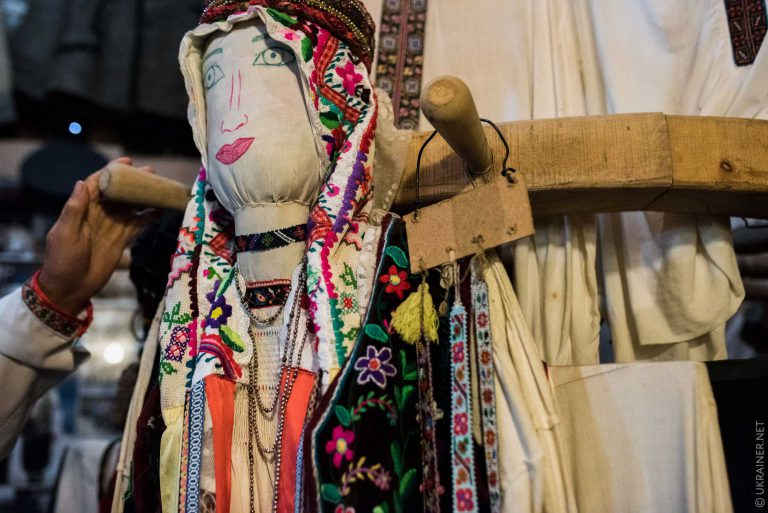
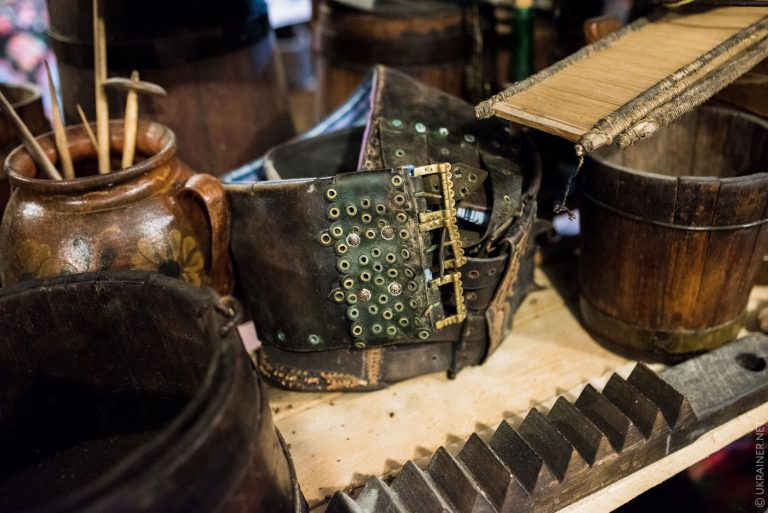
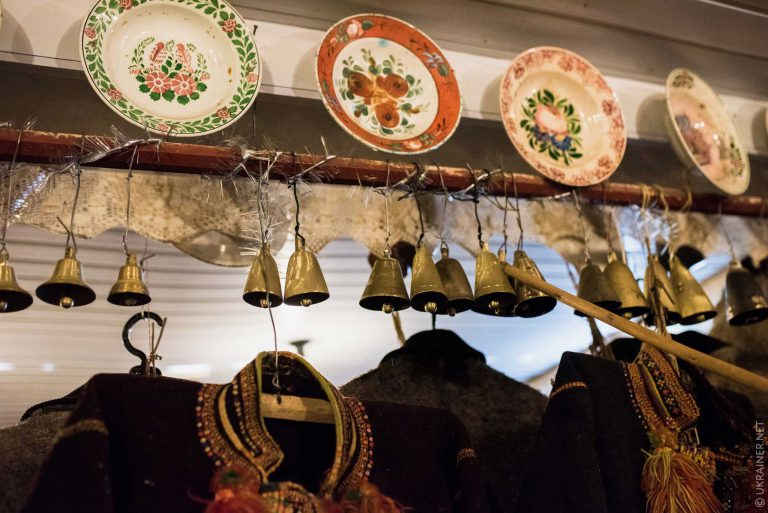
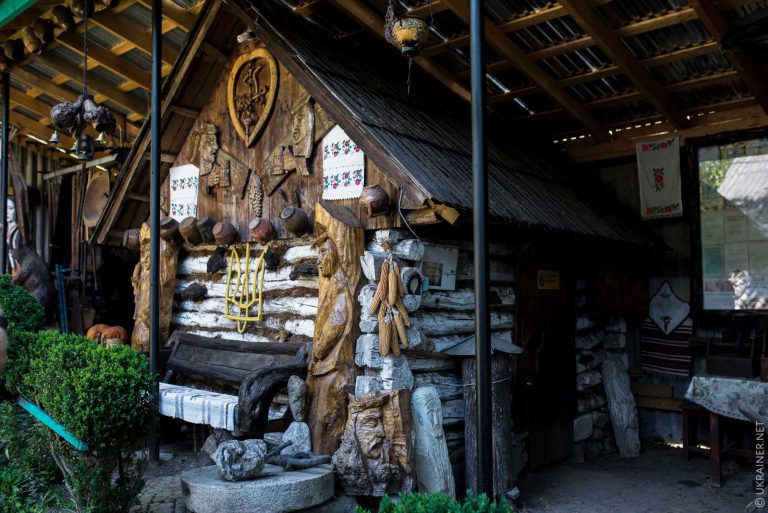
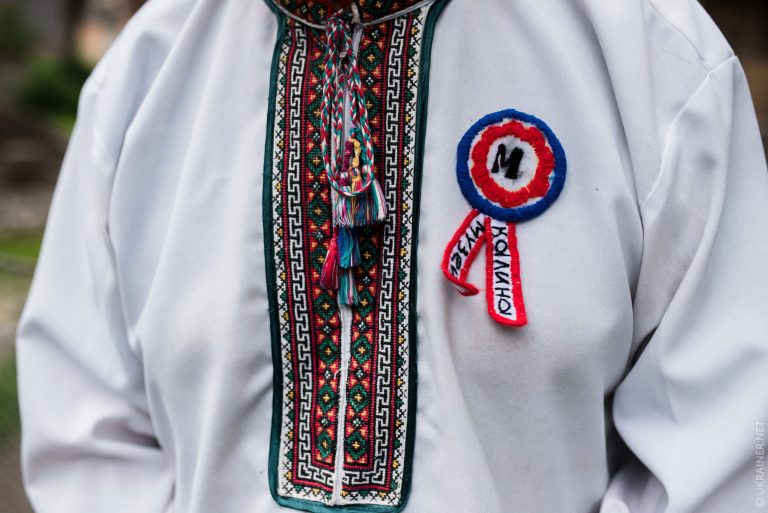
slideshow
Besides the Coat of arms of “death and famine”, one can see an unexpected thing in the museum – a wood carved picture of Indian Taj Mahal. In times free of reconnaissance and construction, Yurii used to do woodwork and paint. Only a few of Yurii’s works are displayed in the museum: a picture of Virgin Mary, landscapes of India and Caucasus. Yurii says that many of his works were sold overseas. Different materials were used during work, such as mahogany, beech, yarrow, walnut, linden. They provide pictures with exceptional shades.
At the doorstep of the museum, there are several wooden sculptures, among which a Carpathian highwayman, opryshok Pynto Khrushch. There is a mill that still works, and a true Transcarpathian hut, which, according to Yurii, was built at the end of the eighteenth century. Among other exhibits, there is a collection of national clothes, weapons of opryshki, household items, ancient musical instruments, trembita in particular. The owner has more than 4,000 items in the museum. Each of them has its own history. Yurii shows a small object, completely different from the ancient hutsul or boyko (ethnic groups) artifacts:
— This is a barometer that shows forecast for a week ahead. Look, here’s the liquid’s path. Here are three components of the liquid. I will not say what they are. It’s a secret. One of them indicates good weather. When it goes up, there will be heavy rains. It even overflows through the top. In clear weather, it goes down. This is the invention of mine.
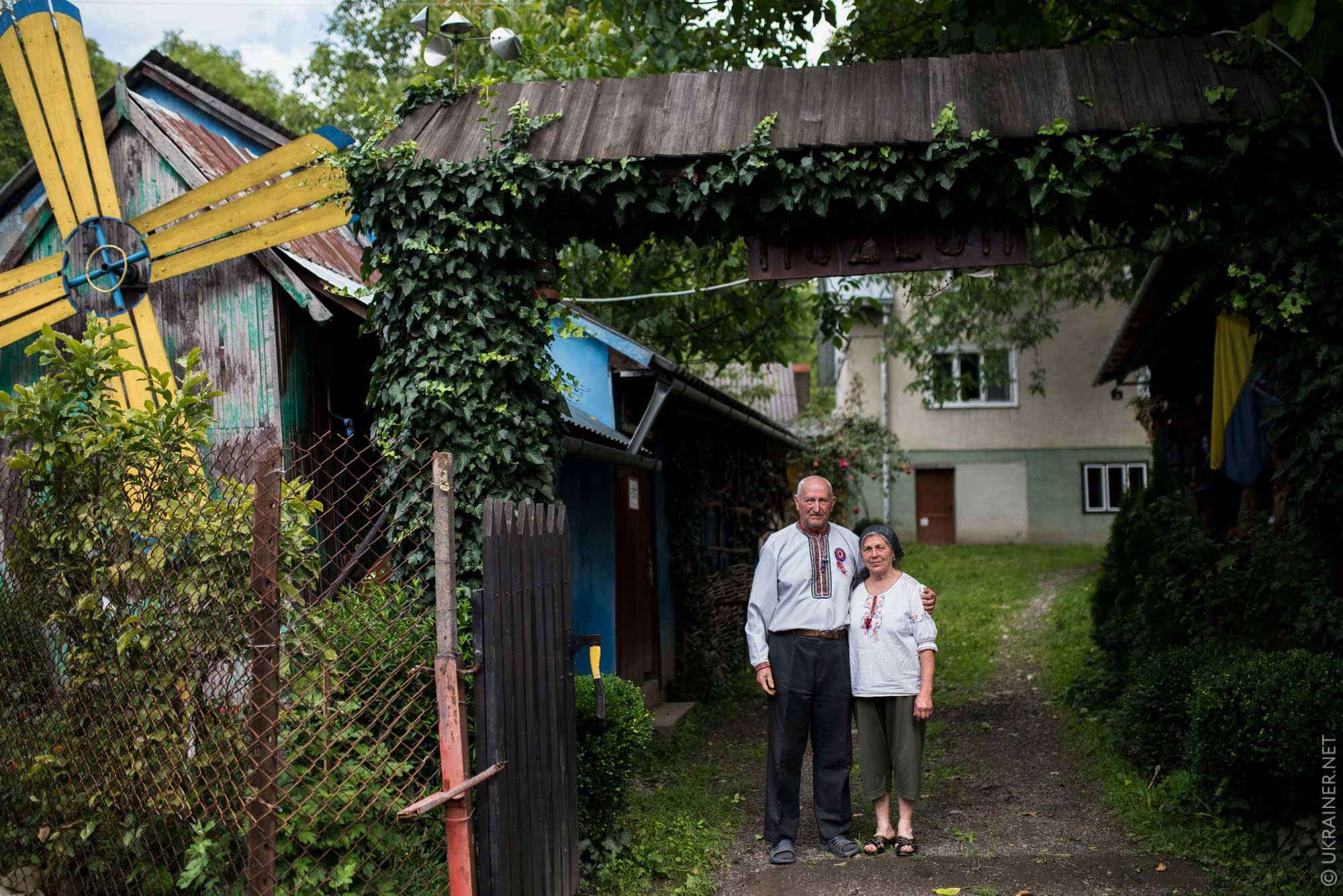
That’s how we unexpectedly learned that the professional “builder” and an amateur “artist” is also an “inventor.” In fact, having spent some time in this place, when you see the invention of the museum’s owner on the table, Indian landscapes on the wall, and African garlic in the garden, nothing can surprise you anymore.
The museum of Yurii Kutsyn is a living being. This territory belongs to the spirit of work, nothing lies around getting covered in dust. The person creates an atmosphere here, whereas things and stories serve as complement to it.

